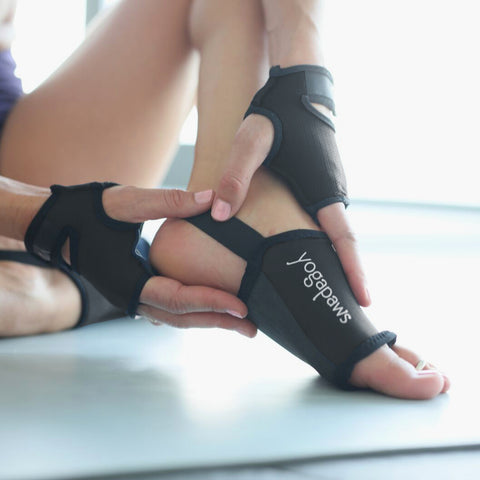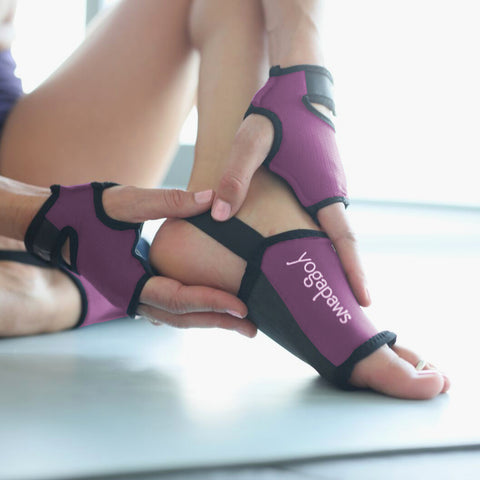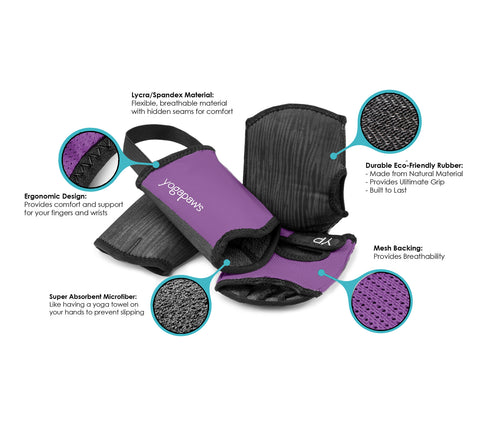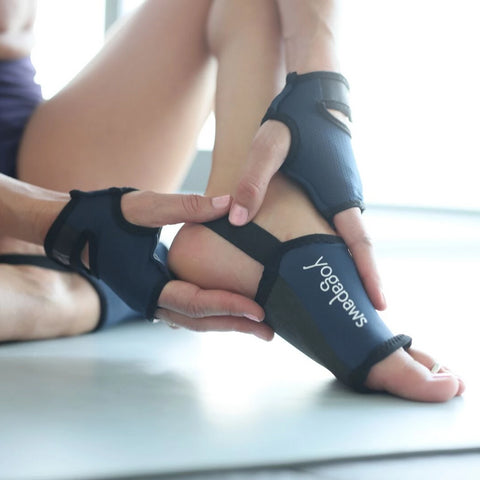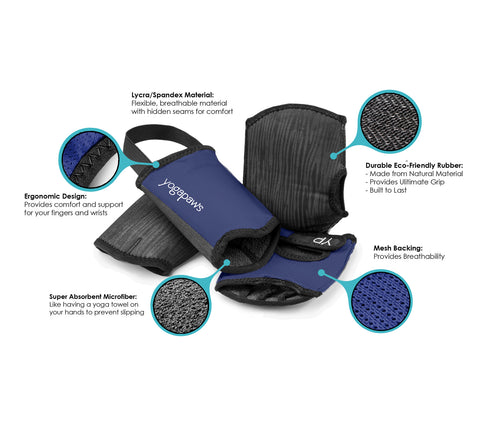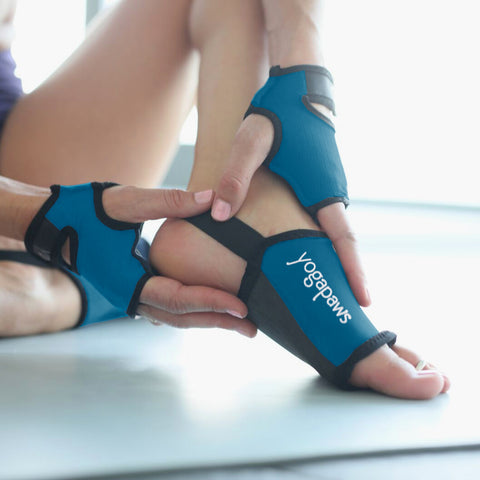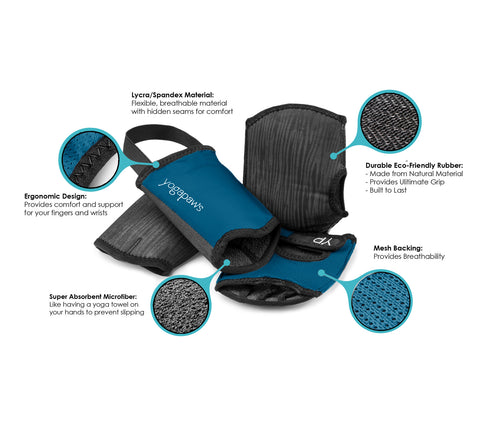Posted on February 01 2018
Spring is synonymous with hope and new life. But however warm the sunshine, however green the grass, you may not be finding your seasonal bliss. Maybe you’re one of the estimated 20 million or more American who experienced at least one major episode of depression during the last year. Or, maybe, you’re one of the millions more who feel frustrated or stuck in an unhappy place in your life. It may seem you have no choices. Yoga is a powerful reminder that you do.
 Your yoga practice is a continuous exercise in exploring just how capable you are at directing your life. For the entire class time, you make decisions about where your edge is, what poses are right for you and what you want to learn. For that time, you are completely free to pick your own path, but sometimes everybody ends up shying away from the path they truly want to pursue because it doesn’t seem doable. How many times have you gone to a yoga class, looked at the instructor demonstrating a new pose and thought, “I’ll never be able to do that.” But, a few classes later, everything clicks and there you are, hovering above the ground in Bakasana (Crow Pose) or completing your fifth round of Sun Salutations without missing a breath. If you can make these kinds of leaps in the 75 or 90 minutes you invest in your practice, just think what can happen when you apply that same spirit or 75 or 90 days—or years!
Your yoga practice is a continuous exercise in exploring just how capable you are at directing your life. For the entire class time, you make decisions about where your edge is, what poses are right for you and what you want to learn. For that time, you are completely free to pick your own path, but sometimes everybody ends up shying away from the path they truly want to pursue because it doesn’t seem doable. How many times have you gone to a yoga class, looked at the instructor demonstrating a new pose and thought, “I’ll never be able to do that.” But, a few classes later, everything clicks and there you are, hovering above the ground in Bakasana (Crow Pose) or completing your fifth round of Sun Salutations without missing a breath. If you can make these kinds of leaps in the 75 or 90 minutes you invest in your practice, just think what can happen when you apply that same spirit or 75 or 90 days—or years!Success in the physical aspects of yoga launches a cascade of actions in your body that can literally help change your mind. As the American Yoga Assn. points out, yoga exercises put pressure on glands and organs, “helping them to produce the soothing, healing chemical balance that is needed to feel well and be well.” Asana practice also can help to improve circulation, “sending invigorating oxygen to your brain and all your muscles. The stretching and strengthening movements flush toxins from the body as well.” And then there’s the endorphin rush of pushing past what you thought were your limits, whether that means mastering a pose or finding new meanings in a familiar asana.

|
Viparita Karani (Legs Up the Wall Pose) Benefits: This grounding pose helps center you in the present moment and not let your thoughts slide into sadness. How to do it: Begin by placing a folded blanket five to six inches away from the wall. Sit so that your hips are in the space between the blanket and the wall. Lie back and extend your legs on the wall. Remain in the pose for five to 15 minutes. |
|
Traditional Downward Facing Dog Demonstrated in photo |
Adho Mukha Svanasana (Downward-Facing Dog Pose) Variation Benefits: This variation of Down Dog, which Timothy McCall suggests as an asana for depression, supports your head while forcing you into the present by engaging all four limbs. How to do it: Begin in Balasana (Child’s Pose). Place a folded blanket or bolster under your forehead. Extend your arms out in front of you. Straighten your knees and come into Down Dog, making sure your head is still supported by the prop. If it isn’t, experiment with moving it until your head rests on top of the prop. |
|
|
Ardha Chandrasana (Half Moon Pose) with Block Benefits: Opening your chest in this challenging balance pose releases you to experience a feeling of lightness that counteracts the “heaviness” many people experience with depression, according to McCall. How to do it: Instructions for the pose with the addition of a block to help with balance when learning the pose. Hold a block in your right hand. Step or hop your feet about three and a half feet apart. Rotate your right foot outward and your left foot inward. Bend to your right and place the block by your right foot as you come into Trikonasana (Triangle Pose). Bend your right knee and shift your weight forward, moving the block about a foot in front of your right foot. Lift your left leg parallel to the ground and reach your left arm upward, opening your body to the ceiling. Hold for one minute, then release and repeat on the other side. |
|
|
Dolphin Plank Pose Benefits: This strengthening pose helps to calm your thoughts as you gather your energy to hold your body strong against gravity. How to do it: Begin in Dolphin Pose. Walk your feet back until your body is parallel to the ground and your elbows are stacked under your shoulders. Focus on lifting your front body and hold for 30 seconds to one minute. Release your knees to the ground on an exhale. |
 |
Prasarita Padottanasana (Wide-Legged Forward Bend) Benefits: This pose allows to feel supported and free at the same time, countering the feelings of isolation and constriction that often accompany anxiety and depression. How to do it: Stand with your legs three and half to four and a half feet apart. Bending from your hips, place the crown of your head on the ground with your arms next to your head. If your head doesn’t reach the floor, place a prop underneath it. Remain in this pose for one to two minutes. |
Every time you get onto to your mat or grab your YogaPaws and head to the park, you are sending the message to yourself that, not only do you believe you can change and grow but that you have acted on the intention to do so. Yoga is all about “can.” Even when you get caught up in the stories you tell yourself about how you’ve failed, how you can’t do something, how you’ll never be “good enough,” your yoga practice shows you that there’s nothing you want to achieve that you can’t accomplish.






